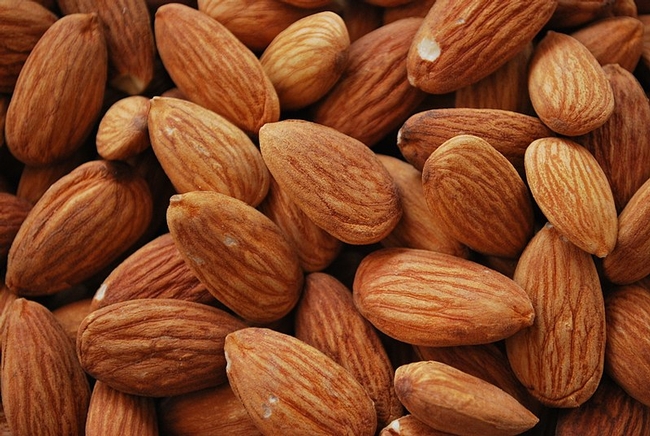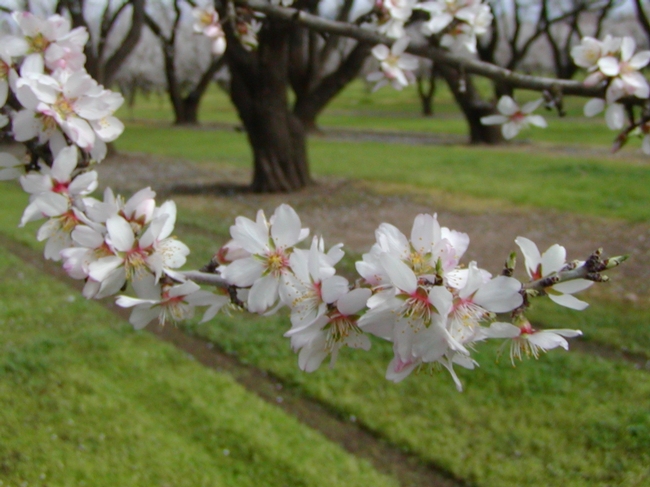Posts Tagged: David Doll
Farmers concerned about potential new tariffs
China has threatened to impose retaliatory tariffs on American exports following President Trump's plan to impose tariffs on steel and aluminum imports. Agricultural exports are in the crosshairs, reported Thaddeus Miller in the Merced Sun-Star.
China's tariffs would first hit U.S. products such as avocados and nuts with 15 percent duties, the article says.
"It doesn't really matter which one it is, whether it's alfalfa, almonds or wherever it may go," said David Doll, UC Cooperative Extension advisor in Merced County. "They're as much political as they are anything else."
The potential tariff would have a significant impact on Merced County, where almonds are the second largest commodity valued at $578.5 million in 2016.
The back and forth trade disputes happening between the U.S. and China make trade less predictable and could lead to disruptions that impact California food and wine producers, even before potential Chinese tariffs go into effect, said Dan Sumner, director of UC Agriculture and Natural Resources' Agricultural Issues Center in an interview with Julia Mitric of Capital Public Radio.
If China hits the U.S. with a 15 percent tariff on wine, that's a problem, Sumner said.
"We may think California wine is special, but not everybody does,” Sumner said. "And if it's 15 percent more expensive than it used to be because of the tariff, there'll be a substantial reduction in how much gets sold in China."
Sumner said the proposed tariffs would likely hurt California's tree nut growers more than its wine producers because a larger proportion of almonds and pistachios are exported.
In 2016, the value of pistachios sold to China was $530 million, more than three times the value of wine exports to that country, Mitric reported.
Climate change is impacting California tree crop farms
Rising temperatures appear to be reducing the number of hours tree crops in the San Joaquin Valley are subjected to chill during the winter, a critical factor in producing a profitable yield, reported Ezra David Romero on Valley Public Radio, KVPR-FM.
Pistachios, for example, require temperatures between 32 and 45 degrees for about 700 hours each winter, but for the past four years have had less than 500 chill hours.
UC Davis researcher Hyunok Lee recently published a study about climate change impacts on agriculture in UC Agriculture and Natural Resources' peer-reviewed journal California Agriculture. The study found that winter temperatures are increasing more than any other time of year. Her modeling looks at the year 2050 in Yolo County.
“Our agriculture will continue,” Lee said. “But if you look at . . . like 20 years or 30 years. The pattern may change a little bit, crops may move a little bit north.”
Romero spoke to UC Cooperative Extension farm advisor Craig Kallsen, who holds the UC Cooperative Extension Presidential Chair for Tree Nut Genetics. Kallsen is conducting trials aimed at finding pistachio varieties with novel nut, tree growth and yield characteristics, and varieties that produce a high yield even under low-chill conditions.
"We're trying to use the other species of pistachios actually to see if we can come up with something that has a low chill requirement. It's pretty hypothetical at this stage,” Kallsen told Romero. “We made quite a few crosses this spring and we actually hope to put a trial in a low chill area.”
David Doll, UC Cooperative Extension farm advisor in Merced County, is studying other tactics to improve winter chill, such as using overhead sprinklers to cool the trees and painting them white with liquid clay to reflect sunlight.
"So this is something that could impact a lot of farmers over the next 10, 20, 30 to 40 years,” Doll said. “And in fact it's already impacting farmers on random given years across the state."
The enigma of almond pronunciation explained
As a general rule, farmers in the northern part of the state say “am-end” and farmers in southern areas say “almond.” In a quest for an explanation, Romero spoke to numerous farmers and ag industry professionals who all told a version of the same joke. For his story, he quoted UC Cooperative Extension farm advisor David Doll, who he called the "go-to guy" for all things almond in California.
“Farmers will often tell you, you call it an almond on the tree and an am-end on the ground because you shake the l out of it,” Doll told him.
But in terms of the true rational, Doll couldn't provide a definitive answer.
"People who refer to it as am-end tend to be longer-term farmers, so they've been farming for multiple generations,” Doll said.
A UC Davis plant breeder was able to offer a plausible explanation.
When almonds were first introduced by Spanish missionaries, almendras (pronounced with the l) did not succeed. Later immigrants from France and Portugal, who pronounced the nut amandola and amande respectively, brought the crop to Central California.
"Somewhere along the line the use of am-end stuck in Northern California, while the Spanish-inspired noun grew popular elsewhere," Romero reported.
Almond prices dip as global demand plunges
Despite the state's four-year drought, almond production continued its steady rise over the last 15 years. The plunge in global demand may impact the trend, according to UC Agriculture and Natural Resources Cooperative Extension advisor David Doll. Last year Philpott asked Doll how long the almond boom would continue.
"He told me it would only stop 'when the crop stops making money,'" Philpott wrote.
Doll explained that, under normal water supply conditions, the break-even farmer price for almonds is $1.45 per pound. But when water is scarce and farmers pay more for water, the break-even price rises to $2.60 to $2.85 per pound. The Fresno Bee this month reported that almond prices dropped about 20 percent to $2.50 to $2.75 per pound.
Growers are hoping that El Niño will reduce water costs and that the Asian and European appetite for almonds returns to normal, pushing up the almonds' value once again.
Ezra David Romero of Valley Public Radio reported that the strength of the U.S. dollar also reduced buyer interest in California almonds.
"We probably pushed the price up too high," said Darren Rigg of Meridian Growers in Tulare, Calif. "It killed off demand, and people at a certain point, they just don't buy."
In the web version of Romero's story, he used a picture of UC ANR's David Doll in an almond orchard.
UC IPM providing helpful information on chlorpyrifos situation
Farmers gathered at the UC Kearney Agriculture Research and Extension Center in Parlier yesterday to discuss potential action by the EPA on the insecticide chlorpyifos, reported Ezra David Romero on Valley Public Radio. The meeting was hosted by UC Agriculture and Natural Resources (UC ANR) Statewide Integrated Pest Management project (UC IPM).
Chlorpyrifos is widely applied to many crops for pest control; the highest percentage on almonds, citrus, alfalfa and cotton. However, the U.S. Environmental Protection Agency has proposed cancellation of its use in agriculture.
"Chlorpyrifos is a tool and over reliance on that tool to help us solve pest problems is going to have environmental impacts and potentially could impact human populations as well," said UC ANR Cooperative Extension advisor David Doll in the Valley Public Radio story.
Romero also spoke to Selma almond grower Bill Chandler at the meeting.
"Don't give up the ship, there's help," Chandler said. "That's why they (UC IPM) had this meeting to say, listen gentlemen, there's these problems. Let's learn how to work with them and see what we can use differently."
More UC IPM meetings on the issue will be held in the coming weeks at the following locations:
Jan. 12 – Citrus in San Joaquin Valley
8 a.m. to 12:00 p.m.
UC ANR Cooperative Extension office, 4437 S. Laspina St., Tulare
Jan. 21 – Alfalfa in Imperial Valley
8 a.m. to 12:00 p.m.
Farm Credit Services Southwest, 485 Business Parkway, Imperial
Jan. 26 – Almonds in Southern San Joaquin Valley
8 a.m. to 2:30 p.m.
Kern County Agricultural Pavilion
3300 E. Belle Terrace, Bakersfield
Feb. 5 – Almonds in Northern California
8 a.m. to 12:00 p.m
Chico Masonic Lodge, 1110 W. East Ave., Chico
For more information contact Lori Berger, UC IPM chlorpyrifos project coordinator, at lberger@ucanr.edu or (559) 646-6523.





